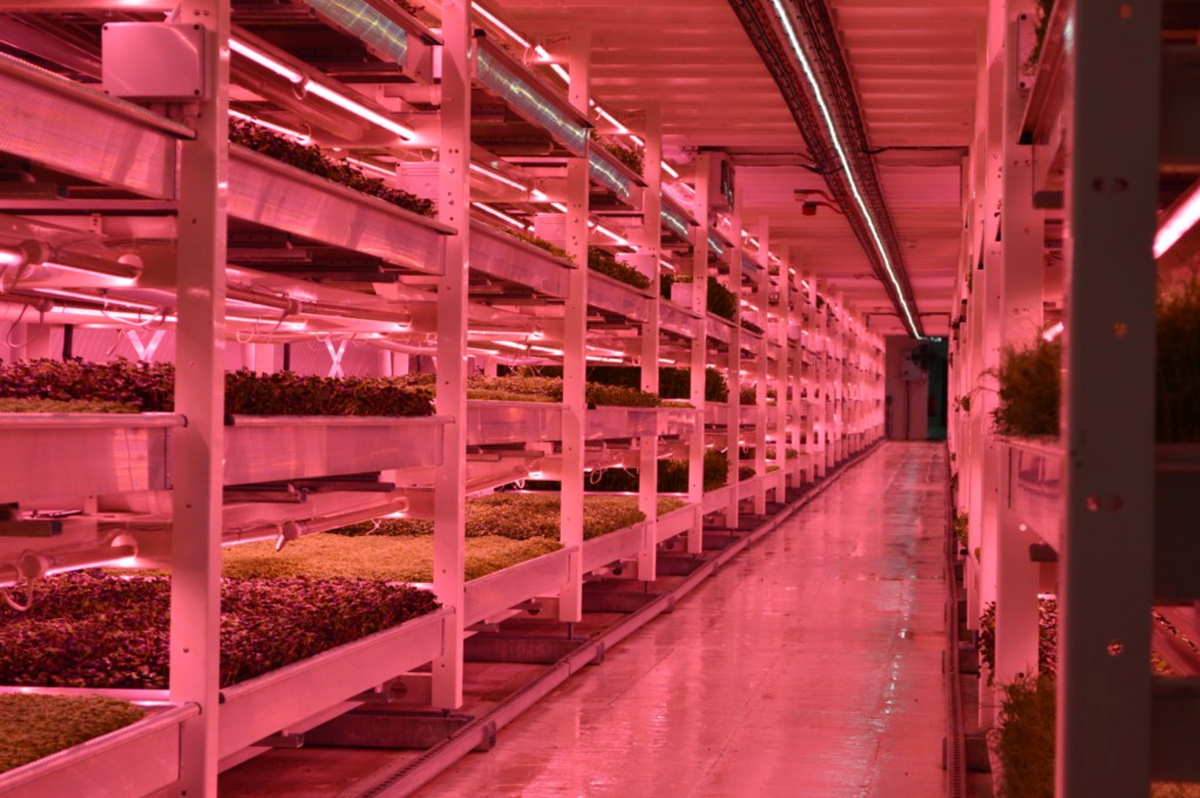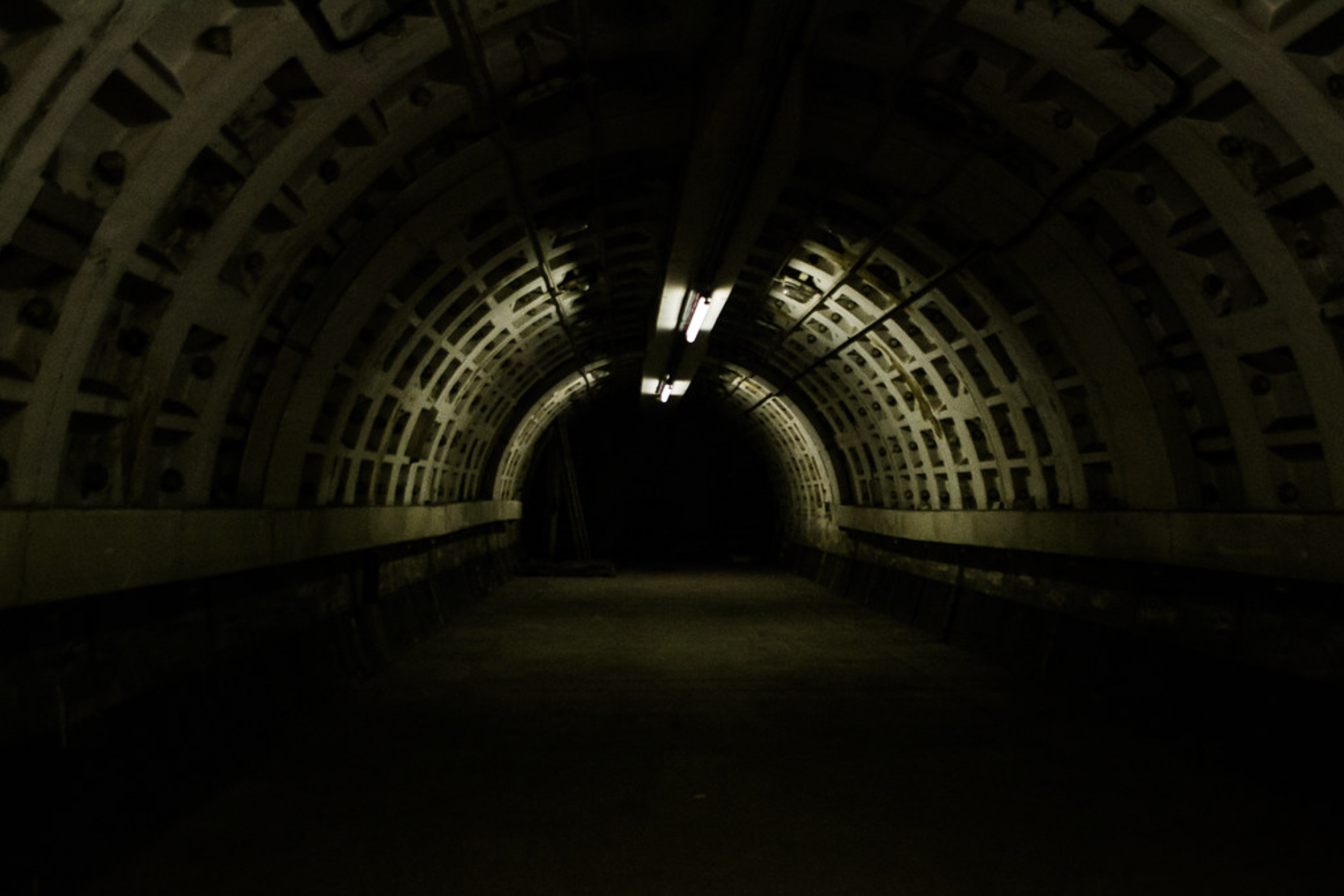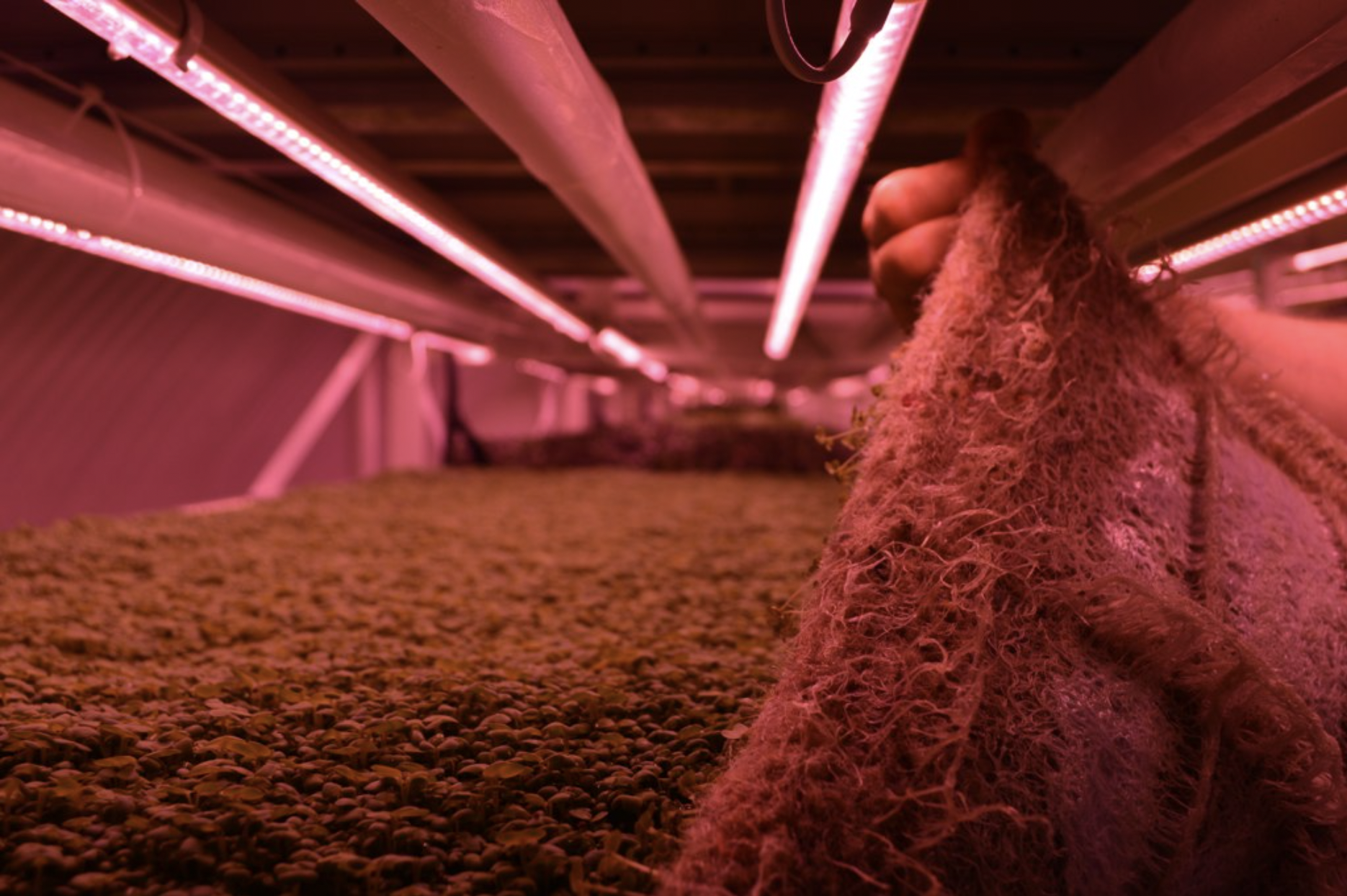A Farming Revolution Beneath the Streets of London

By Drago Nuić, BA International Relations
The future of agriculture can be found 33 metres below Clapham, or so claims Growing Underground, the agricultural retail brand of Zero Carbon Farms launched in 2015 by co-founders Richard Ballard and Steve Dring. Located in a deserted World War Two air red shelter, the pair set up a hydroponics farm which currently grows various microgreens such as broccoli, pea shoots, coriander, red cabbage, and sunflower. The novelty of their approach is not limited to having your greens cultivated underground, but rather can be found in the innovative principles they advocate for how food should be grown. According to Growing Underground, the core of their vision is to grow food while reducing their carbon footprint at every stage of the production and distribution process – aka, ‘Zero-carbon food’. The World Resources Institute estimates that a 56% food gap in crop calories produced will have to be closed by 2050 in order to feed the projected human population of 10 billion sustainably – a production increase that will need to occur in the context of spiralling climate change and intensifying environmental degradation. Ballard and Dring have also stated that they were inspired by the works of academics Dickson Despommier and Jeremy Rifkin, in particular Rifkin’s 2010 book ‘The Third Industrial Revolution’ in which he projects the transition from a carbon-based economy to a post-carbon world, and Despommiers theorisation of feeding the world sustainably using vertical farms. The challenge is to find a way to grow more food in ways that lowers emissions, without using more land, and is resilient to climate change. The farming facility Growing Underground established underneath Clapham is their proposed solution.
“The future of agriculture can be found 33 metres below Clapham”
Underneath the mimicked sunlight of low-cost pink coloured LED lights for photosynthesis, planted in trays of used wool carpet cut-offs given a new lease in life rather than being dumped in a landfill, row upon row of microgreens are carefully cultivated. Growing Underground’s hydroponic system requires 70% less water, grows 12x more per unit area, and contains up to 90% more nutrients than microgreens grown using conventional farming methods – all without the use of pesticides or more land use overground. The farm also fully grows a new batch of produce every 10 days consistently throughout the year. Once the microgreens have been harvested, they are packed on site and sold locally, including at the New Covent Garden Market less than a mile away and at various grocers in London such as Waitrose, M&S and Tesco, reducing emissions and food miles. However, by their own admission, this process uses 4x more energy per unit area than a regular farm but Growing Underground accounts for this by running their farm with 100% renewable energy. Growing Underground has also partnered with Dr Ruchi Choudhary and their team from the Centre for Smart Infrastructure and Construction of the University of Cambridge and the Data-centric Engineering Programme from the Alan Turing Institute to develop a form of “Smart farming” in which every detail of the growing process is monitored and optimised by a system of complex sensors. Growing the microgreens in this contained and closely regulated environment allows for higher yield year-round harvesting regardless of the climate, quality of soils, and the threat of pesky pests.
Growing Underground recognises both the vast potential, and the possible limitations, of their operation; they are aware that growing microgreens in small facilities such as theirs in Clapham will not address world hunger and climate change alone but see this farm as a step in the right direction, as a model to be replicated and expanded. Moreover, they recognise that the development of vertical underground farming as a solution to food security and climate change relies on the parallel development of other technologies, such as cheap renewable energy, greater battery storage, and more energy efficient LED lighting. Growing Underground as a business is realising its own potential, having increased its production capacity, and expanding their scope to partner with cosmetic brands in 2021 to produce the ingredients for their fragrances and flavours. Time will tell, however, if the seed that Growing Underground has planted, in the form of a sustainable ‘Zero-carbon’ model of agriculture, will germinate into a global phenomenon that will be able to concretely tackle the issues of food security and climate change.
Underneath the mimicked sunlight of low-cost pink coloured LED lights for photosynthesis, planted in trays of used wool carpet cut-offs given a new lease in life rather than being dumped in a landfill, row upon row of microgreens are carefully cultivated. Growing Underground’s hydroponic system requires 70% less water, grows 12x more per unit area, and contains up to 90% more nutrients than microgreens grown using conventional farming methods – all without the use of pesticides or more land use overground. The farm also fully grows a new batch of produce every 10 days consistently throughout the year. Once the microgreens have been harvested, they are packed on site and sold locally, including at the New Covent Garden Market less than a mile away and at various grocers in London such as Waitrose, M&S and Tesco, reducing emissions and food miles. However, by their own admission, this process uses 4x more energy per unit area than a regular farm but Growing Underground accounts for this by running their farm with 100% renewable energy. Growing Underground has also partnered with Dr Ruchi Choudhary and their team from the Centre for Smart Infrastructure and Construction of the University of Cambridge and the Data-centric Engineering Programme from the Alan Turing Institute to develop a form of “Smart farming” in which every detail of the growing process is monitored and optimised by a system of complex sensors. Growing the microgreens in this contained and closely regulated environment allows for higher yield year-round harvesting regardless of the climate, quality of soils, and the threat of pesky pests.
Growing Underground recognises both the vast potential, and the possible limitations, of their operation; they are aware that growing microgreens in small facilities such as theirs in Clapham will not address world hunger and climate change alone but see this farm as a step in the right direction, as a model to be replicated and expanded. Moreover, they recognise that the development of vertical underground farming as a solution to food security and climate change relies on the parallel development of other technologies, such as cheap renewable energy, greater battery storage, and more energy efficient LED lighting. Growing Underground as a business is realising its own potential, having increased its production capacity, and expanding their scope to partner with cosmetic brands in 2021 to produce the ingredients for their fragrances and flavours. Time will tell, however, if the seed that Growing Underground has planted, in the form of a sustainable ‘Zero-carbon’ model of agriculture, will germinate into a global phenomenon that will be able to concretely tackle the issues of food security and climate change.
Featured Photo Caption: Doused in the glow of pink LED lights, rows upon rows of microgreens are being cultivated (Credit: Matt Brown/ Creative Commons).






